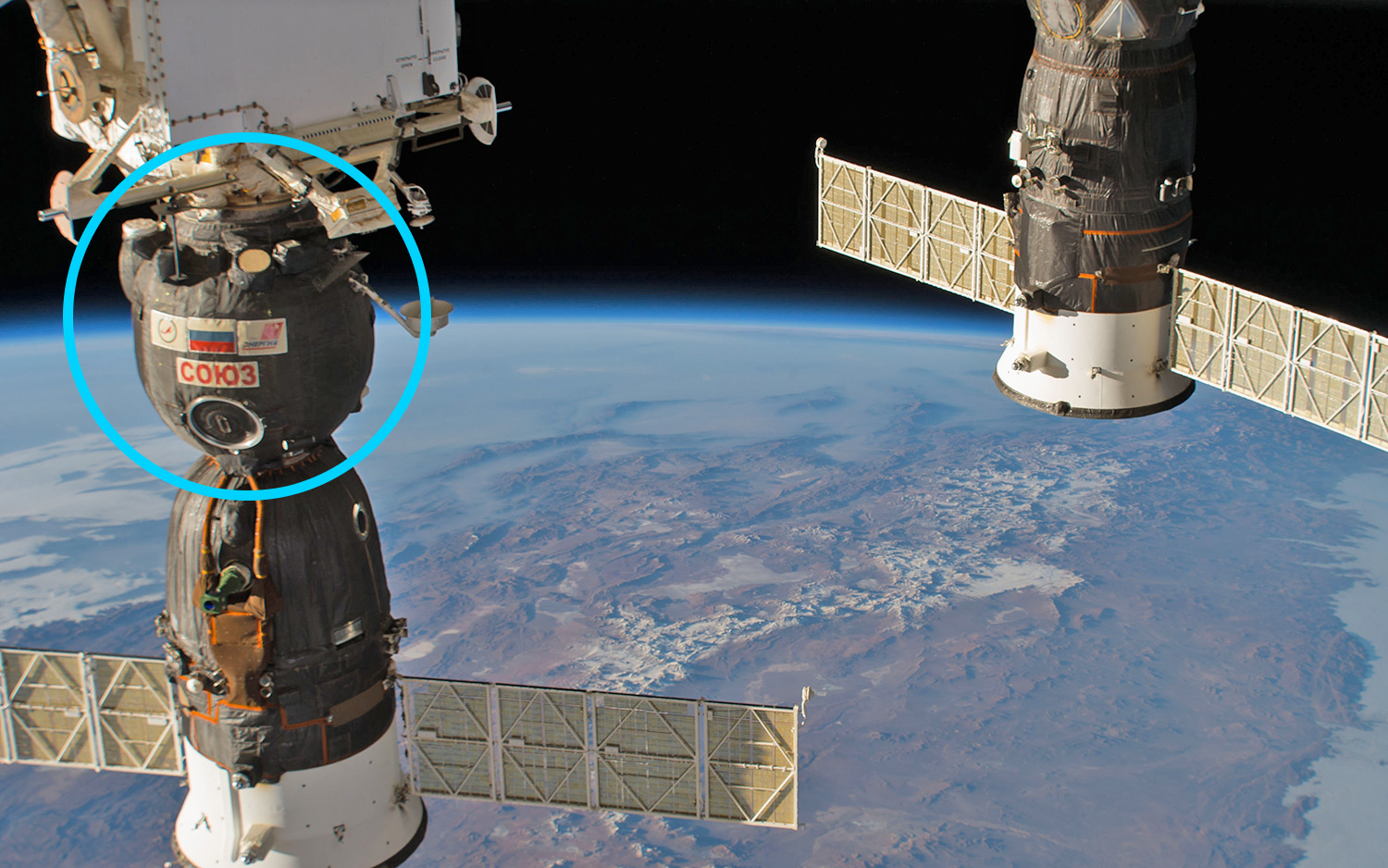Russian Space Agency to NASA: Investigation Into Space Station Leak Is Under Way

Two weeks after astronauts and cosmonauts repaired an air leak at the International Space Station, investigators are still trying to figure out how the tiny hole got there.
According to a new joint statement from NASA and Roscosmos, Russia's federal space agency, Roscosmos Director Dmitry Rogozin invited NASA Administrator Jim Bridenstine to meet in a teleconference on Wednesday (Sept. 12) to discuss the investigation.
"As part of their discussion, Dmitry Rogozin informed his American counterpart about Roscosmos' decision to establish a Roscosmos-led commission to investigate the cause of the leak in the Soyuz (MS-09/55S) spacecraft currently docked to the station," NASA and Roscosmos officials said in the statement. [Russia's Manned Soyuz Space Capsule Explained (Infographic)]
Expedition 56 crewmembers located the 2-millimeter (0.08 inches) hole in the orbital compartment of the Soyuz on Aug. 30, shortly after ground controllers noted a slight drop in pressure on the Russian side of the space station. After astronauts plugged the hole with a combination of gauze, epoxy and heavy-duty tape, pressure inside the orbiting laboratory returned to normal.
While NASA and Roscosmos haven't determined the cause of the leak, Rogozin initially speculated that a micrometeoroid could be responsible. However, Rogozin later said that the hole appears to have been human-made, as if an engineer with "a faltering hand" drilled the hole either accidentally or deliberately.
"The administrator and the general director noted speculations circulating in the media regarding the possible cause of the incident and agreed on deferring any preliminary conclusions and providing any explanations until the final investigation has been completed," NASA and Roscosmos officials said in their joint statement.
Earlier this week, NASA astronaut Drew Feustel, commander of Expedition 56, shot down the idea that one of the station's six crewmembers could have intentionally caused the leak in an act of in-orbit sabotage. "I can unequivocally say that the crew had nothing do with this," Feustel told reporters during a space-to-ground interview. Bridenstine and Rogozin "acknowledged the entire crew is dedicated to the safe operation of the station and all docked spacecraft to ensure mission success," the statement said.
Bridenstine and Rogozin will have their first face-to-face meeting at the Baikonur Cosmodrome in Kazakhstan next month, when NASA astronaut Nick Hague and Russian cosmonaut Alexey Ovchinin will launch to the International Space Station in the Soyuz MS-10 spacecraft, according to the statement. The Soyuz MS-09, where the mysterious leak was found, is scheduled to return to Earth in December with NASA astronaut Serena Auñón-Chancellor, Russian cosmonaut Sergey Prokopyev and European Space Agency astronaut Alexander Gerst.
Breaking space news, the latest updates on rocket launches, skywatching events and more!
Email Hanneke Weitering at hweitering@space.com or follow her @hannekescience. Follow us @Spacedotcom, Facebook and Google+. Original article on Space.com.

Hanneke Weitering is a multimedia journalist in the Pacific Northwest reporting on the future of aviation at FutureFlight.aero and Aviation International News and was previously the Editor for Spaceflight and Astronomy news here at Space.com. As an editor with over 10 years of experience in science journalism she has previously written for Scholastic Classroom Magazines, MedPage Today and The Joint Institute for Computational Sciences at Oak Ridge National Laboratory. After studying physics at the University of Tennessee in her hometown of Knoxville, she earned her graduate degree in Science, Health and Environmental Reporting (SHERP) from New York University. Hanneke joined the Space.com team in 2016 as a staff writer and producer, covering topics including spaceflight and astronomy. She currently lives in Seattle, home of the Space Needle, with her cat and two snakes. In her spare time, Hanneke enjoys exploring the Rocky Mountains, basking in nature and looking for dark skies to gaze at the cosmos.
